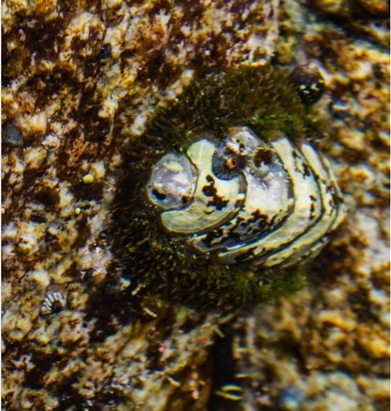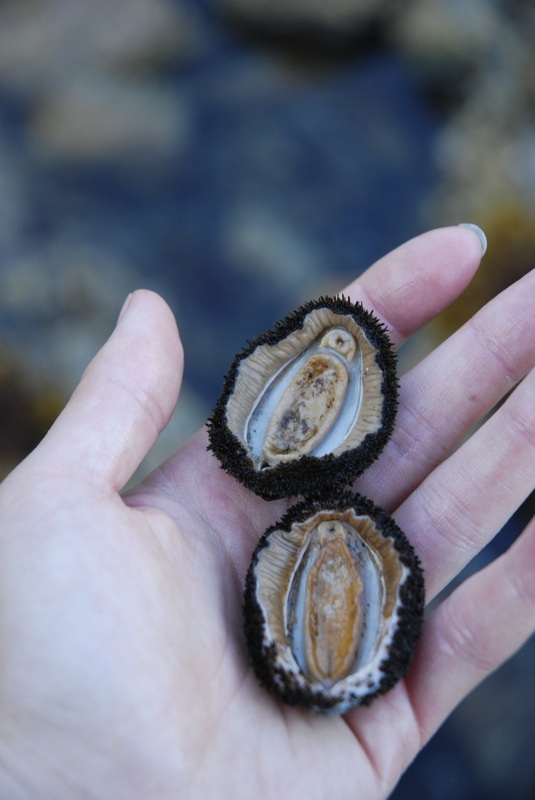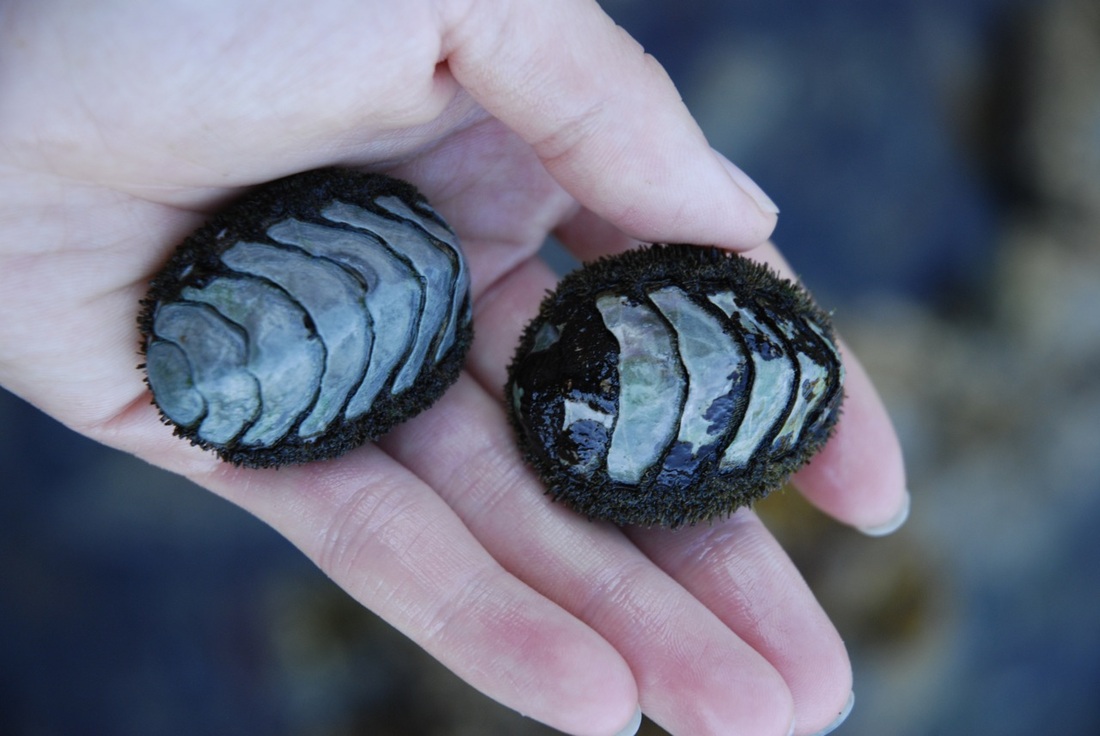Mossy chiton • Mopalia muscosa
Identification
This chiton's mossy-textured girdle is its main distinguishing characteristic. This texture is formed by long stiff hairs that are usually distinctly shaggy-looking. Its shell plates are dark brown or grey and fairly drab, and surrounded by an even width of girdle. None of the plates is obviously larger than the rest. The exposed shell plates of the mossy chiton may be eroded or covered in other organisms such as barnacles and algae. Mossy chitons are oval-shaped and can reach 10 cm long, but more commonly grow to about 3 cm.
Habitat & Range
This intertidal species is found from Alaska to Isla Cedros in Baja California. It prefers less exposed areas than the black katy chiton, and thus can be often found in tidepools in rocky areas. It can handle sand and silt, however, and can also tolerate brackish water as it is occasionally found in estuaries.
Similar Species
Other Mopalia species have a mossy look as well, but have thinner hairs that are more flexible than the mossy chiton's stiff girdle hairs. M. lignosa is one such example.
Intriguing Info
The mossy chiton has specific requirements for when it will move: only at night, and when it is wet or submerged. Most individuals have non-overlapping "home ranges" that they return to after making a night-time underwater excursion. Individuals that live in tidepools and thus are permanently submerged may not exhibit this behaviour.
This chiton's mossy-textured girdle is its main distinguishing characteristic. This texture is formed by long stiff hairs that are usually distinctly shaggy-looking. Its shell plates are dark brown or grey and fairly drab, and surrounded by an even width of girdle. None of the plates is obviously larger than the rest. The exposed shell plates of the mossy chiton may be eroded or covered in other organisms such as barnacles and algae. Mossy chitons are oval-shaped and can reach 10 cm long, but more commonly grow to about 3 cm.
Habitat & Range
This intertidal species is found from Alaska to Isla Cedros in Baja California. It prefers less exposed areas than the black katy chiton, and thus can be often found in tidepools in rocky areas. It can handle sand and silt, however, and can also tolerate brackish water as it is occasionally found in estuaries.
Similar Species
Other Mopalia species have a mossy look as well, but have thinner hairs that are more flexible than the mossy chiton's stiff girdle hairs. M. lignosa is one such example.
Intriguing Info
The mossy chiton has specific requirements for when it will move: only at night, and when it is wet or submerged. Most individuals have non-overlapping "home ranges" that they return to after making a night-time underwater excursion. Individuals that live in tidepools and thus are permanently submerged may not exhibit this behaviour.
References
Cowles, D. (2005). Mopalia muscosa (Gould, 1846). Invertebrates of the Salish Sea. Rosario Beach Marine Laboratory. Accessed 07/06/2013
Harbo, R. M. (1999). Whelks to whales: Coastal marine life of the Pacific Northwest. Madeira Park, BC: Harbour Publishing. P. 125
Authors and editors of page
Kelly Fretwell and Brian Starzomski (2013).
Cowles, D. (2005). Mopalia muscosa (Gould, 1846). Invertebrates of the Salish Sea. Rosario Beach Marine Laboratory. Accessed 07/06/2013
Harbo, R. M. (1999). Whelks to whales: Coastal marine life of the Pacific Northwest. Madeira Park, BC: Harbour Publishing. P. 125
Authors and editors of page
Kelly Fretwell and Brian Starzomski (2013).






